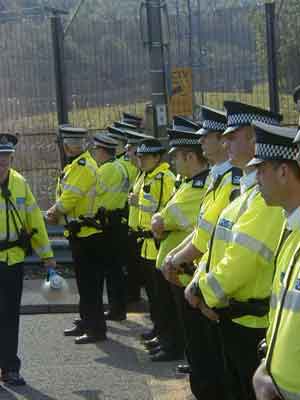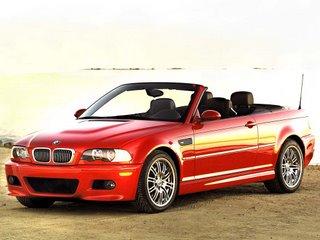HOW I CURED MY FEAR OF HEIGHTS
All my life I’ve been terrified of heights. Little did I know that a trip back through my childhood memories could well be the key to a new outlook on life
The expression ‘paralyzed with fear’ is a phrase I know well. Ever since I can remember, the thought of being in an open space more than three feet high has literally made me freeze with anxiety. Only last year aged nineteen, I was reduced to tears when my parents decided to take the family on a cliff-side drive in Fuerteventura, pausing only to take a family photo up against a crumbling wall, which seemed (to a height phobic like myself) ten million feet above the ground. A seaside pleasure trip on the Bournemouth Eye, a brightly coloured anchored hot-air balloon, was an attempt to conquer my fear of heights. As the balloon rose to 500 feet, there was only a flimsy barrier preventing me from plunging to my death. I was left clinging to the side with my eyes closed, shaking uncontrollably and unable to appreciate the beauty of the seaside resort, while my friends took a leisurely walk around the perimeter of the hot-air balloon. I thought at the age of 20, it was time to overcome this fear forever, and I was prepared to do that by any means possible.
During my research into different therapies, including past-life regression and hypnotherapy, I discovered that the two hold distinct similarities. Both call upon your past to heal. “Hypnotherapy involves tapping into the much greater power of your unconscious mind, which is the part that controls fears,” says experienced hypnotherapist Nick Hixson. “During the process, I talk to the unconscious mind directly, suggesting ways it can still protect the client but in a softer way. It is not any sort of mind control, and the subject will be able to stop at any time. They will never be doing anything which is against their beliefs of morals.”
Past life regression involves calling upon much more distant memories, perhaps even from a past life to find the problematic memory.
I’m not the sort of person to believe that hypnotherapy or past life regression works, although I do have an open mind, and I’m willing to believe that negative experiences can scar people and affect their lives. Martin Armstrong-Prior is a senior clinician in psychotherapy and hypnotherapy, and a member of the National Council for Hypnotherapy. He explains the trance-like state that allows people to overcome their fears occurs in everyday life. “Trance state is a normal phenomenon and most people go into trance between five and seven times a day. In this the focus of the “conscious” mind drifts from the here and now, while the “sub-conscious” mind continues normal function.”
Beryl West is a spiritual healer, psychiatric nurse and hypnotherapist, specialising in fears, phobias and past life regression. Although I had never met her, she seemed very chatty on the phone, and I felt comfortable talking to her.
Driving to Beryl’s house, I felt nervous. Against my expectations, of a shabby looking, crooked, unkempt property, her house in suburban Bournemouth was a 1930’s stone-fronted detached property, just like any other house along the road. Walking up to the front door, I felt like turning back and driving back to the comfort of my own home. A small lady answered the door, her face showing signs of suffering a stroke, and her body bent through 20 years of feeling others’ anguish. The interior of the house was alive with small trinkets. A sign of the life the hypnotherapist had once lived. A small white flower basket, brimming with tiny blue and pink bone china flowers sat next to an a chunky gold table-top clock, ticking away the years that had passed on a heavy mahogany cabinet. I was invited into her living room, where soft, relaxing music was playing in the background, and more heavy wooden cabinets bordered the room, again littered with tokens of thanks from healed clients. I was invited to take a seat in a brown velour reclining armchair, as Beryl took a seat opposite me, her arthritic hands curled around a sheet of paper as she asked me questions regarding my mental and physical health. I was made to feel comfortable right from the beginning, as she talked openly about her past clients. One young lady had a fear of aeroplanes. She had not been holiday for 10 years, despite the need to travel around the world for her job. After one session, Beryl used a process of interpreting language to reveal that the young lady’s problem had stemmed from an experience when she was 14. By re-associating aeroplanes as ‘safe places’, the client felt comfortable enough to book a holiday. A month after the treatment, the client took the 9,000-mile trip to Australia and was completely cured of her fear.
After talking for about 15 minutes about what hypnotherapy is, and what would happen, Beryl reclined my chair, and gave me a vibrantly coloured crocheted blanket as a comfort. I began fingering the loose threads as nervously I pulled the blanket higher around my body. Myth says that some people need a security blanket to make them feel safe when under hypnosis. Your body temperature drops when accessing your subconscious, so the blanket also serves to give warmth.
The relaxation exercises consisted of Beryl telling me to relax my body, starting from the head, down the back of the neck, the front of the neck, and down to my feet, then she told me to imagine a bright light, travelling the same path, from my head to my feet. I could feel my eyelids fluttering, almost like I was blinking repetitively. She then counted from five to one, deepening my relaxation further.
Beryl then asked me to recall a time when I had experienced a negative event with heights. I remembered that when I was four, I had fallen up an escalator. I recalled that I had been wearing white tights, a dark red skirt and black patent shoes. My mother was at the bottom, and my father was at the top. I wanted to go shopping with my father, so I got on the escalator, but missed the first step and fell over, grazing my knees badly. I remember looking down, and seeing blood soak through my white tights.
I was then asked to go back further in my subconscious, and I remembered being on a beach in Menorca. I was three years old, and I was going to go to the shops to get an ice cream. I remember wearing a yellow swimming costume. Retrospectively, this appeared to be out of character, as I don’t normally remember anything about family holidays before the age of 17. I recall walking up concrete steps to the shop, but instead of walking back down them to get to the beach, I jumped off the path onto the beach, falling on a stone, and hurting my knee.
After I had recalled my memories to Beryl, she told me to visualise a safe place. I visualised my bed. Beryl then asked me to fast forward and rewind my bad memory, ending in the safe place, starting with the beach incident. First she guided me through it, and then told me to do it as fast as I could by myself. She then asked my to visualise a newer negative experience, so I recalled going up in the Bournemouth Eye. She asked me how scared I felt, on a scale of one to ten, with ten being the scariest, one being the least scary. I felt completely comfortable with stepping onto the Bournemouth Eye, so I scaled it at five. She confirmed with me that I was comfortable with the situation, and then counted from one to five, and I was awake.
During the hypnotherapy, I felt relaxed, almost like I was asleep, but I could sense everything around me, and knew I was in the room, under hypnosis. I also knew I could open my eyes at any time if I wanted to. Afterwards, I had a chat with Beryl and she said I went into a hypnotic state almost instantly. She told me about when she was hypnotised, and found out she had subconsciously separated her life at a young age, due to a negative experience. With the help of hypnotherapy, she had re-joined her two selves. She also explained that some people try to resist hypnosis, while others refuse they have been hypnotised, because it feels so natural. It doesn’t feel strange at all, and you are in control at all times. Half an hour after arriving at Beryl’s house, I was ready to leave, but was I cured?
Test number 1: Spinnaker Tower
The first task seemed easy – to visit Portsmouth’s answer to the Eiffel Tower. Spinnaker Tower is as high as three Nelson’s columns, and overlooks the harbour. There is a panoramic lift on the outside of the architectural structure, and this was the test. Could I get in the lift, and travel up to the peak? Watching the numbers climb metre by metre on the lift display up to the lower floor, I felt slightly uneasy, but confident I could carry out the task.
Entering the first floor gift shop was a lot easier than I expected. Faced with an enclosed space, I was fine. The only thing slightly deterring me was the floor to ceiling glass windows. The view across Portsmouth Harbour was breathtaking. The next step to the challenge was standing on the glass floor in the centre of the room. This was something I have found virtually impossible since the age of five. I always used to avoid stepping onto lights set into the floor at shopping centres for fear of falling through. The thought of plunging more than 300 feet to my death did not boost my confidence. After five minutes watching toddlers and teenagers dance happily on the transparent surface, I was overcome by the need to follow their example. Gingerly stepping onto the first tile, grabbing onto the rail, just in case (the small doubt in my mind told me) the glass gave way. I felt revitalised. This would not have happened a month ago. Feeling a surge of adrenalin, I let go of the rail, and walked across the remaining tiles with a renewed confidence.
I was ready for the next step. Walking up the stairs with a refreshed attitude, I arrived in the Cabin, 400 feet above sea level. Looking around, I was able to appreciate the spectacular site across Portsmouth Harbour, feeling completely safe and comfortable.
Golden Cap, Dorset
Golden Cap is the highest point along the south coast. As my car struggled to climb the steep roads leading to the National Trust site, I began to feel slightly nervous. Situated south of small holiday hot-spot Chideock, West Dorset, Golden Cap stands more than 600 feet above sea level, twice the height of Big Ben’s clock tower. Driving along single-track roads to the car park, my anxiety grew, and the cliff loomed in front of me. The three-quarter of a mile walk to the peak would have been a workout for any experienced walker, but for someone who exercises once a year, it was torture.
Approaching the summit of the cliff, I felt a renewed energy to get to the top, pausing only to take in the scenery. Lush green hills spotted with snow patches, and on the other side, the glistening expanse of sea. The experience thus far was only spoilt by the 100 mph winds that increased in intensity as I climbed to the peak.
Finally, the last hill, and I had reached the top. I was met not with fear, but with pure pride. Looking across the sea, and turning round to take in the panoramic views across West Dorset, any small inkling of uneasiness was blown away by the wind. I managed to walk within two feet from the edge, with nothing between me and the bursting sea below.
Finally, I was cured of a fifteen year fear of heights, and oh, it felt so good!




